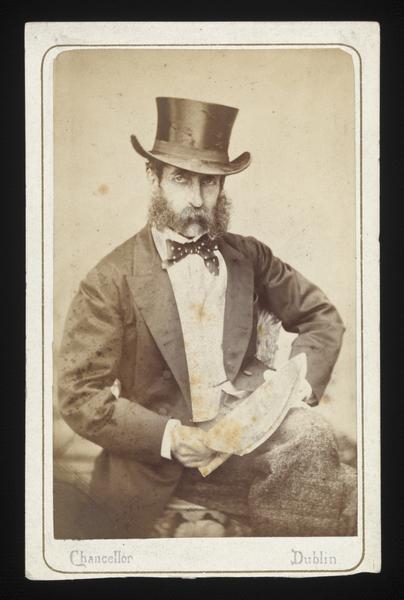George John Whyte-Melville, born on 19th June 1821 was a Scottish novelist, poet, and sports enthusiast. He was born in St Andrews. He probably got his penchant for sports from his father, who was a renowned athlete, while also being a Captain of ‘St Andrews Golf Club’.

George gained private tutorship by Robert Lee, before schooling at Eton. He enrolled in the military in the year 1839, attaining the rank of captain in the Coldstream Guards in seven years, i.e. in the year 1846. He attained retirement in 1849. In 1847, he conjugated to The Hon Charlotte Hanbury-Bateman, siring one child, a girl, Florence Elizabeth.
During the Crimean War, he set out as a volunteer major of Turkish cavalry, which proved to be a halt in his literary career.
Works
His initial novel “Digby Grand” gained publication in the year 1852, after the translation of Horace, which was in 1850. Digby proved to be an enormous achievement, gaining massive popularity. Thereby he proceeded to publish as many as 21 writings and went on to become a famous writer particularly in relation to the realm of hunting.
Most of his heroes and heroines, Digby Grand, the Honourable Crasher, Kate Coventry, etc. were in association with the art of hunting.
However, his work was not limited, Bones and I, or The Skeleton at Home, may be considered as an irregularity to the mass of his writings, as it strolls far from the realms of hunting or historical romance. Instead of focusing primarily on an outsider, residing in a small villa located in a London street passage. His most appreciated and infamous lyrics are on uncommon themes, dwelling in the realm of deep sadness and sorrow.
He also engaged in the publication of volumes of poetry, which included Songs and Verses (1869) and Legend of the True Cross (1873).
Death and Memoria
Whyte-Melville lost his life on December 5th, 1878 in an odd accident while hunting. He met his demise in the Vale of White Horse.
The theory floats that Whyte-Melville’s death is the inspiration behind the infamous song about hunting, “John Peel” this may be due to the fact that John Graves, the author of the lyrics, was close to George. At Whyte’s funeral, Graves wrote some verses on him, as a tribute.
Whyte-Melville Memorial Fountain, St Andrews, Fife, Scotland
A memorial fountain was constructed as a tribute to him, via mass-wide contribution, on persuasion from Lady Catherine, his mother. As tall as 4 feet, the three-layered sandstone and Granite fountain was made featuring four marble plaques devoted to him, thereby these include his bust, family coat of arms, the arms of the Coldstream Guards, and a memorial inscription.
The fountain, although, fell victim to neglect owing to the corrosion of the internal piping, thereby, being used for years, as a flower-bed.
The fountain was however re-established on 8th July 2015, after to a crusade by St Andrews Merchants’ Association, along with one local counsellor. Being attached to new pipe systems and being connected to the main supply, thus giving it its earlier stunning display and functionality.